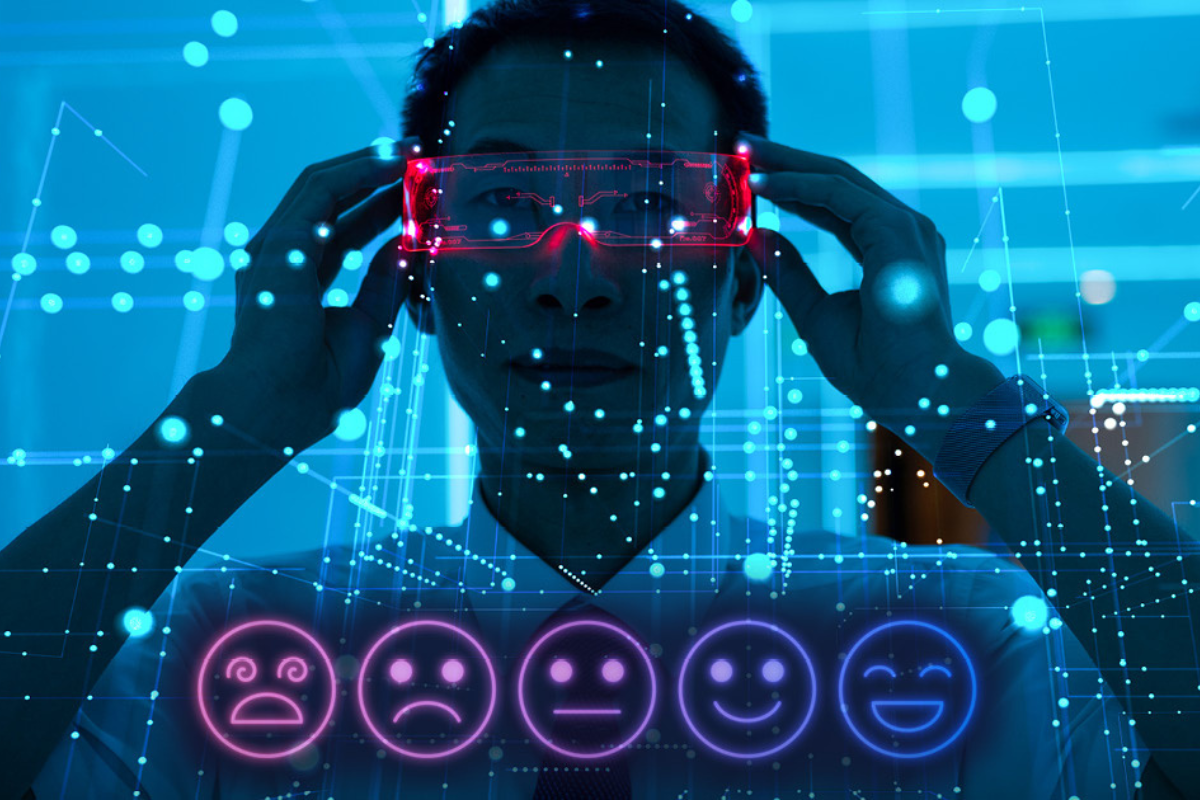If the customer is always right, then a worrying number of global businesses are getting it very wrong.
Customer experience (CX) is defined as the overall impression felt during every touchpoint with a company from initial awareness to purchase and beyond.
It includes advertising, customer service, product quality, design and packaging, right down to whether the sales assistant was a little curt.
And at a time when positive CX is the cherished holy grail for corporate success, those experiences are falling short of expectations, according to a raft of surveys.
Forrester’s annual United States study reported sharp declines in customer satisfaction, with less than a quarter of firms rated as ‘good’ and not one as ‘excellent’. The results echo similar findings in the United Kingdom, Asia and Australia.
While inflation and disrupted supply chains are useful scapegoats to cling to, a bigger issue is that the experience of being a customer is in flux. Data analytics and immersive technologies have revolutionized how companies interact with the people who buy their products and services.
It’s advanced more in the last decade than it did in the 250 or so years since the Industrial Revolution. And many organizations are flailing wildly as they struggle to keep up.
Being smart about data

A recent Harvard study illustrates a potential impending CX crisis: A whopping 99 percent of businesses agreed they had to be smart about their customer data, but a derisory two percent thought they were currently doing so successfully.
Businesses are struggling to keep up, with 98 percent impacted by poor CX, according to CSG’s 2023 State of the Customer Experience, a report no one could accuse of skimping on detail, given that it studied 12 billion customer journeys.
There’s an increasing realization that profits flow from not only what buyers think, but how they feel, so it’s little wonder that tech-savvy CXOs, armed with just such insights, are increasingly on a fast-track to becoming CEOs.
Indeed, customer-centric firms are 60 percent more profitable, according to a Brightlocal survey last year.
As American business author Kevin Stirtz stated: “Every contact we have with a customer influences whether or not they’ll come back. We have to be great every time or we’ll lose them.”
He pointed out a study that found an increase in customer loyalty of just five percent can lead to double the profits.
But there’s a fine line between intuitive messaging and entering creepy stalker mode by pushing out notifications for macchiatos as someone walks past a coffee shop or flooding their social media with ads for a particular make and model if they casually browse a car website.
The days of TV companies blanketing millions with the same ad may be coming to an end as AI figures out how to distribute bespoke messaging through streaming services to specific people at specific times.
Perhaps billboards on bus shelters will detect the approach of an unshaven man and suggest a razor he probably should have used.
Five CX facts
- 83.5% of metaverse users are under 18.
- 87% of business leaders say prioritizing employee happiness gives them a competitive advantage.
- 79% of consumers say recommendations based on past purchases are ‘cool’, a 2023 Marigold Global survey found. However, two-thirds found location-based ads ‘creepy’.
- 71% of customers would never use a company again if it shared their data without permission.
- 71% of customers are happy to interact with a bot if it improves service.
Robotic feeding frenzy
Meanwhile, AI is driving automation and robotics to new heights, blurring the lines between human and non-human interaction, and anticipating your craving for a mid-afternoon donut before you do.
There have been numerous reports of Google and Facebook working out a person was pregnant before they even knew themselves, and targeting them accordingly.
Maybe such intrusions were on the mind of the ‘Godfather of AI’, Geoffrey Hinton, when he quit Google in May, issuing dire warnings about AI’s capacity for “bad things”.
Either way, such predictive analysis fuels the omnichannel feeding frenzy of granular insights gleaned from Snapchat views, grocery habits, routes to work, streaming histories and any momentary pauses while scrolling through suggested posts, kitten videos and Insta-worthy soufflés.
Ironically, the humanizing and personalization of customer experience involves increasing interactions with nonhumans. Chatbots already have an 88 percent satisfaction rating, a Comm100 survey reported last year.
Unlike mere homosapiens, they don’t get snappy, confused or require lengthy training courses. Nor do they clock off on the dot of 5pm. An IBM study found they reduce the cost of customer service by nearly a third.
Another way to make savings by removing people is to host part of the customer journey in an alternate reality.
If a potential purchaser wants to test drive a Tesla Model S, try on a Polo Ralph Lauren shirtdress or explore an Arctic cruise ship from their couch, the metaverse is already teeming with virtual malls and hyper-real shopping adventures. There’s even a term, ‘phygital’ for shoppers preferring to combine the physical and digital worlds.
Chief customer officers have some frighteningly powerful tools at their disposal as experience management morphs from rudimentary customer service protocols into the ‘experience economy’, involving sophisticated two-way conversations across every conceivable platform, your toaster included.
If that sounds like treading on the CMO’s toes, you may be right, according to former Mercedes Benz CEO Steve Cannon, who argued that “customer experience is the new marketing”.
Here, five respected CX experts predict what the biggest trends will be in the run up to 2030 and beyond.
Richer profiling for enjoyable ads

CX Trend 1: ULTRA-PERSONALIZATION
Andrew Brain is Director of Audience Intelligence at Seven West Media, Australia’s leading integrated media company and a pioneer of data-driven audience intelligence.
He says that as entertainment providers learn more about consumers, advertising will be more engaging – and not something to be skipped.
“Businesses know so much more about their customers than they did just three years ago, but they’ll learn more still as data analytics advances and audience profiles become even richer,” Brain explains.
“At Seven, we know not only what our viewers watch on our own channels, but, with data partnerships, also what other media brands they use across TV, digital, social and audio, helping us to connect with them off-platform.
“Understanding their demographic, gender, life stage and location gives a deeper understanding of their spending preferences.”
“Overall, customer experience will be improved, with ads becoming more entertaining, engaging and relevant because the broadcasters and streamers know exactly what you like.” – Andrew Brain
Brain adds that as streaming functionality grows, even free-to-air channels will be able to harness the same personalization for mass, prime-time audiences.
“What’s set to radically change in the digital landscape though, is the loss of third-party cookies. We’ve prepared Seven for it by aggressively building a robust ‘user consented’ first-party data strategy to cope with the tightening of data privacy laws.”
In the future, consumers will want to see what the benefits are of sharing their data, Brain adds, and that comes from a true value exchange between the media owner and individuals.
“Overall, customer experience will be improved, with ads becoming more entertaining, engaging and relevant because the broadcasters and streamers know exactly what you like.”
Inhuman interactions

CX TREND 2: AUTOMATION
Founder of CX Journey Inc and the author of four influential customer journey books Annette Franz has held CX roles in several companies and spoken on the subject at international conferences. She foresees a future driven by evermore sophisticated bots.
“The customer journey’s already being transformed by automation, and it’s a trend that’s only going to gain momentum with more personalized service, contextualized transactions and enhanced self-service,” she says. “There’ll be a much greater chance for first contact resolution and the ability to predict where an experience will break down.”
Franz notes that customers have become used to instant transactions that are easy and hassle-free, and companies must focus on delivering these to survive.
“While customer expectations are high, patience certainly isn’t, so AI is essential to improve loyalty.” – Annette Franz
“While customer expectations are high, patience certainly isn’t, so AI is essential to improve loyalty,” Franz adds.
“But the experience can’t feel impersonal or robotic – the more technologically advanced that brands become, the more customers want human interaction, so we’re a long way from completely removing real people.
“There must be a balance, particularly in complex or sensitive issues where they want to speak to an agent.”
But she notes that AI has become so good at mimicking human responses, customers can find it hard to tell if they’re interacting with a bot or another human.
“Natural language processing will mean they’ll learn and respond conversationally, even using humor,” she admits. “As they’ll have all the customer’s data, they’ll also provide personalized recommendations.
“But for now, in most instances, bots frustrate more than help – at least that’s been my experience.”
Protecting customers from data criminals

CX TREND 3: CYBERSECURITY
Former CXO of global cyber security giant Palo Alto Networks Patricia Hatter has advised dozens of multinationals and startups on protecting client data.
The San Jose, California-based business technology leader believes enterprises will need to do much more to be battle ready for more sophisticated reputation-destroying online attacks.
“At a board meeting I was at in 2017, someone raised cyber security in terms of customer experience and the other board members just rolled their eyes. They were seasoned business folks, but none were from the IT space,” Hatter recalls.
“Since then, high-profile data breaches mean there’s a lot more visibility on cyber security among customers, who may well take their business elsewhere if they receive a letter in the post stating, ‘Hey, your data has been compromised!’
“Media coverage is forcing those conversations and creating a trend of having one or more IT representative on boards to talk about the CX risks.”
“I’m optimistic technology will make us safer, but it’ll still be true that you’re only as strong as your weakest link.” – Patricia Hatter
Hatter has hope that cyber crime will be something we can overcome in the future, and that AI will be a tool in reducing or eliminating cyber attacks.
“But it’s so readily available that the bad guys will also use it,” she acknowledges. “Take blockchain, for example – the early conversations I had about it were around the fact that it couldn’t be hacked so was infinitely more secure. But, you know, we’re starting to see that might not be the case.
“I’m optimistic technology will make us safer, but it’ll still be true that you’re only as strong as your weakest link. So, even if you have an elaborate cloud-based security infrastructure, you’ll still be vulnerable if an employee clicks on a bad link.
“A lot of the companies I see do the hard stuff really well, but fall victim because they haven’t done the basics.”
Showing that you care

CX TREND 4: WELLBEING AND ESG
Global surfwear leader Rip Curl’s Chief Customer Officer Michael Scott has previously overseen customer care and marketing at Nike, McDonald’s and Virgin Australia, and admits he’s solved some “gnarly business problems”. He’s a passionate believer that customer and employee experience go hand in hand.
“Staff wellbeing will become more critical in customer management because it has a direct impact on quality of service and gaining new customers,” Scott predicts. “Happy employees are more productive, more committed and more likely to go above and beyond to ensure satisfaction.”
Scott explains that if employees feel supportive, genuine care from the company they work for, it has a positive impact on productivity, with lower rates of burnout and stress. It also makes financial sense for the company.
“Happy employees are more productive, more committed and more likely to go above and beyond to ensure satisfaction.” – Michael Scott
“Replacing employees is time-consuming and expensive, and high turnover rates can be frustrating for customers.”
According to Scott, the area of staff wellbeing, which includes support for mental health and support for neurodiverse employees, promises to be the biggest trend in CX in the near future.
“But customers also want to know you care about the environment, and they’re willing to pay more for products made with consideration for the planet.”
Rip Curl is addressing these concerns as part of the CX strategy, including actively reducing waste and saving energy by using renewables and green shipping. They have also been recently B Corp certified.
“Businesses will need to ensure their operations align with these values to remain competitive, and use CX strategies to educate and engage customers,” Scott concludes.
Populating a 3D internet

CX TREND 5: IMMERSION AND AUGMENTED REALITY
The metaverse already boasts 400 million users and its value is expected to top US$1.5 trillion by 2030.
But building a virtual customer base isn’t as easy as building a fortress in Minecraft, warns Guy Gadney, Founder of the Collaborative AI Consortium and CEO of British-based interactive entertainment pioneer Charisma.
“The internet is moving into 3D, but if customers aren’t used to 3D worlds, teaching them will be a friction point,” Gadney notes.
“So embedding a brand inside a metaverse to reach an existing audience is much more effective. We built the Second Life presence for Accenture, which worked because it attracted people already on the platform.”
“There’s no reason why my avatar needs to walk or run everywhere – let me fly!” – Guy Gadney
He explains that marketing agencies approach the metaverse with a campaign mindset, rather than thinking of building products that will work on the platform.
“Creating a ‘building’ and saying, ‘We’re here!’ won’t cut it anymore,” he says. “There’s a lot of work to be done to populate this new space and AI is helping companies like Charisma create virtual concierges and welcoming avatars that understand you and are vital to making a good first impression.”
Instead of trying to simply imitate real life, Gadney believes companies should be taking a more innovative approach to the metaverse, drawing on the success of open world games like Fortnite.
“For a start, there’s no reason why my avatar needs to walk or run everywhere – let me fly!”







